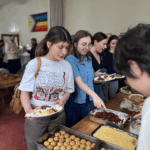
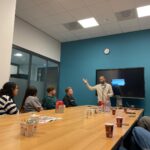
“There’s always that temptation to go one step further. Almost without you realizing it, Ebru teaches you where that limit is.”
Throughout this academic year, RPM had the pleasure of collaborating with a talented artist whose dedication and creative spirit greatly enriched several of our projects. Although she prefers to remain anonymous, her active participation and generous sharing of her work inspired us deeply. We’re excited to share this short interview to highlight her story and the art form she so passionately brings to life.
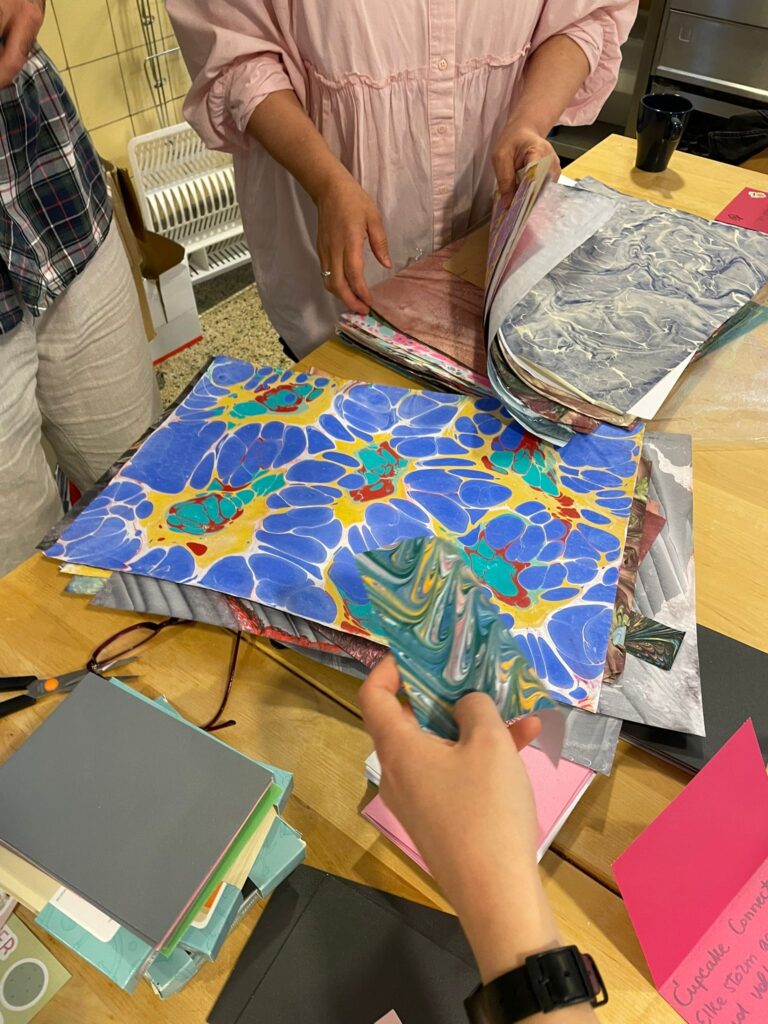
Can you start by explaining what Ebru is for those who may not be familiar with it?
Ebru is the art of paper marbling. In the West, it’s often known as “Turkish paper” or “marbled paper.” It involves creating beautiful patterns with specially prepared paints that are floated on water thickened with a substance called kitre, traditionally made from the sap of the tragacanth plant. Both the brushes and paints used are unique to this art form. Ox gall is added to the paints to prevent them from sinking. The paints are gently sprinkled onto the surface of the water, and the resulting patterns can either be left as they are or shaped using a metal-tipped tool called a biz, or a comb, to create more intricate designs. These designs are then transferred onto paper and left to dry.
How long have you been practicing Ebru, and how has your relationship with the art changed since you sought asylum? Are you involved in any other traditional art forms as well?
I’ve been practicing Ebru for 14 years. Before seeking asylum, I used to practice four days a week. But since arriving here, it’s been difficult—the environment and resources just aren’t the same. Apart from occasional events, I haven’t had many opportunities to continue. Still, I remain hopeful. I dream of having a studio one day, a space where people of all ages can come and discover Ebru. I’d love to see the joy on their faces as they experience it for the first time. I’m also interested in other traditional Turkish arts like tezhip, which is illumination, and kat’ı, which is paper cutting. I try to work on those as well. I’m not a professional at them, but I just do my best to create something meaningful in my own way.
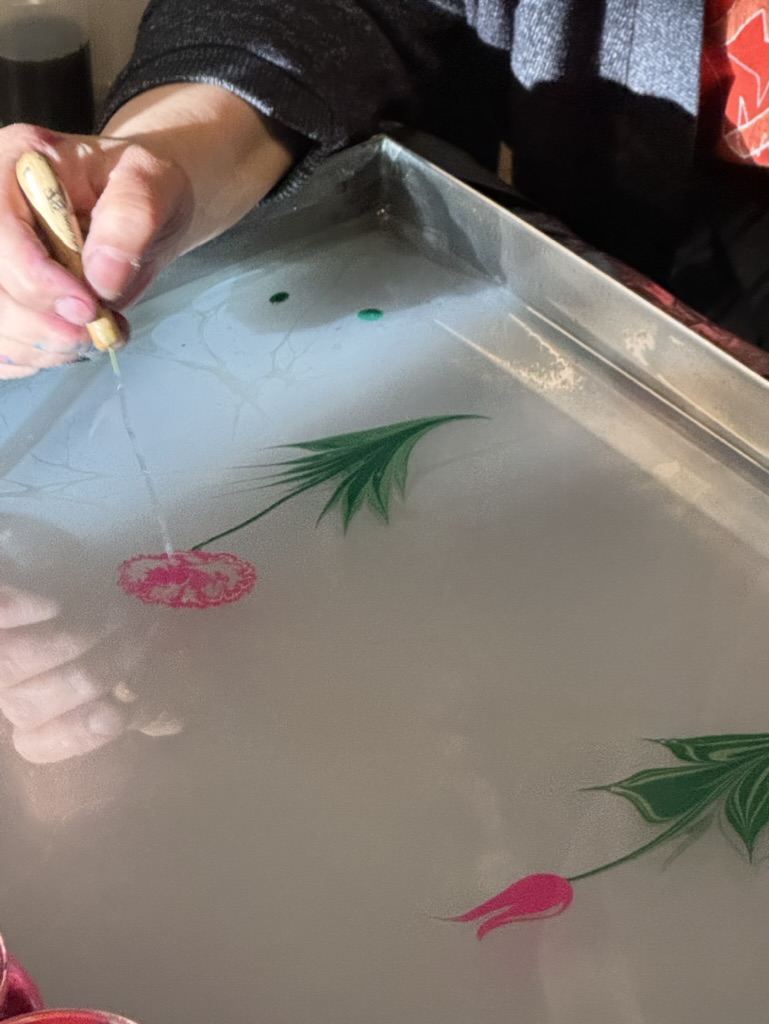
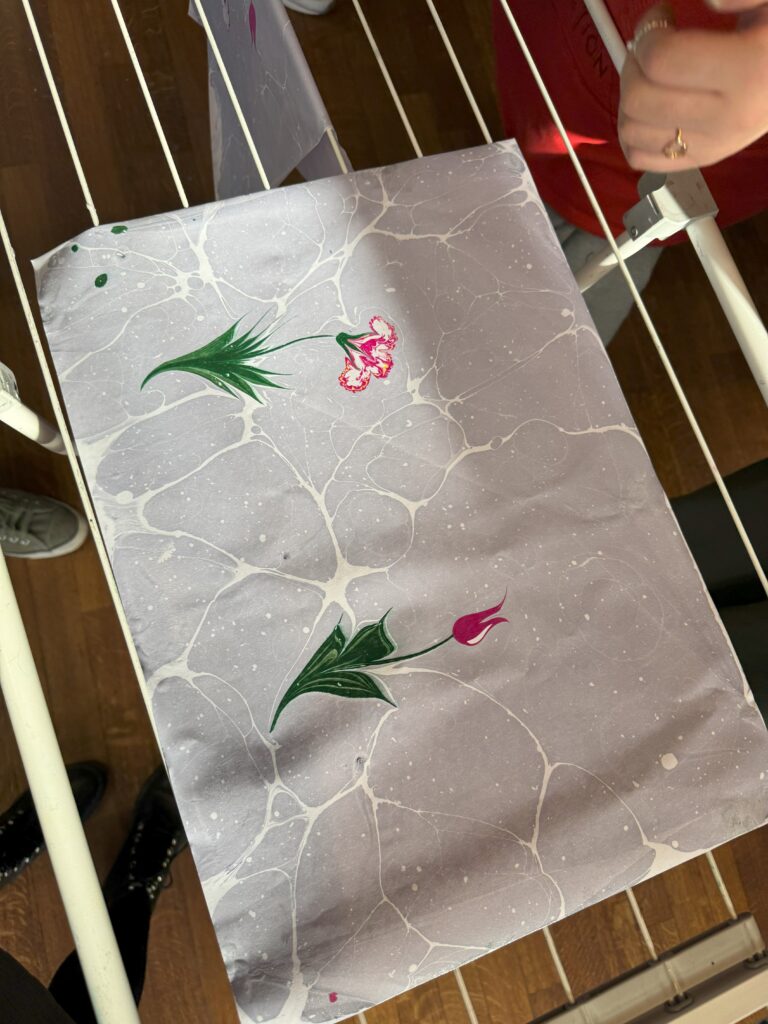
What does this art form mean to you personally?
There’s so much I love about Ebru. I find myself confiding in the paints, the brushes, and the water in the tray. I also love the conversations it opens up. Ebru teaches contentment—it shows me where I need to rein in my ambition. It lets me journey to unseen, beautiful places hidden behind the visible. Even mistakes become part of the beauty. It’s peaceful. It absorbs negativity and transforms it into something positive. It doesn’t judge. It accepts you exactly as you are and reflects your emotions on paper, like a mirror. Let me give you an example. Say you’ve made a beautiful pattern. If you think, “Let me just add one more color,” it can easily disrupt the balance and ruin the piece. Life is a lot like that. In everything—eating, drinking, sleeping, socializing—there’s always that temptation to go one step further. Ebru teaches you, almost without you realizing it, where that limit is.
Can you tell us more about the meaning behind the materials and the process itself?
Absolutely. Every part of Ebru carries meaning. The paints are carefully ground, requiring patience, just as people grow and mature over time. The thickening agent comes from the root of a plant, which is difficult to grasp yet creates a smooth surface when it meets water. The brushes are made from horsehair and rose branches. And ox gall—a substance that is toxic inside the body—becomes essential in Ebru. These contrasts come together to create something magnificent. For those who know how to look, it reflects the universe and the Creator in beautiful ways.
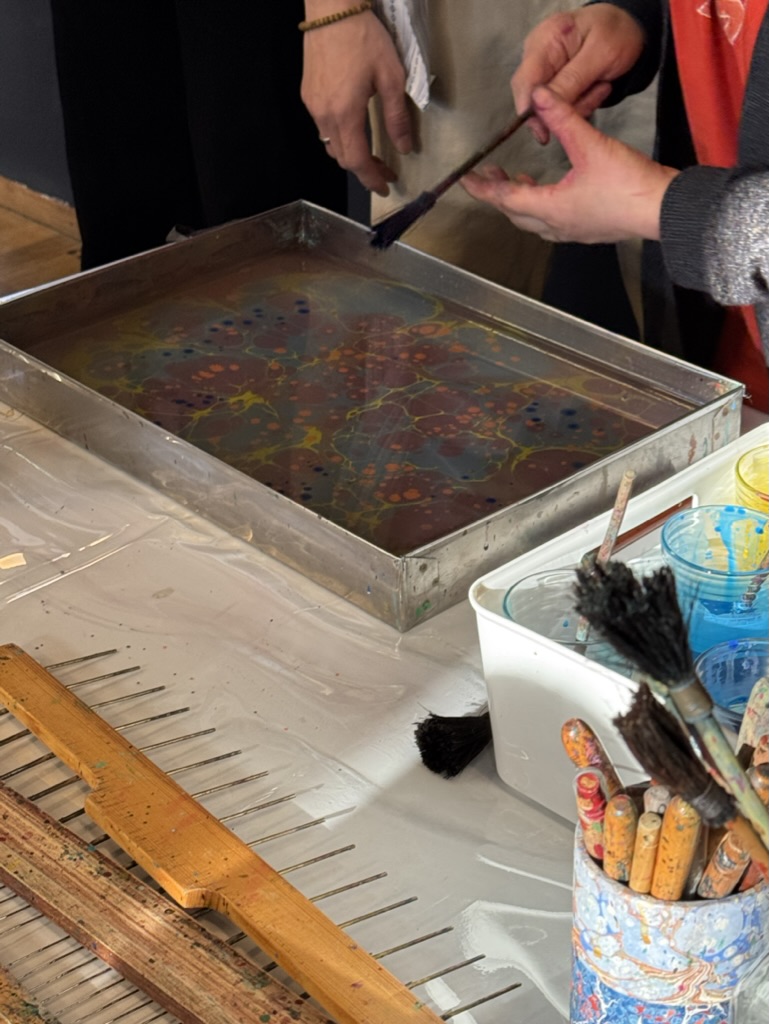
As a closing note, we were grateful to organize an Ebru workshop with her on the 4th of April: a chance for her to share her art with others in a hands-on way. Despite the difficulties of the asylum process, we sincerely hope this moment offered her a sense of joy, connection, and recognition for the talent and beauty she continues to bring into the world.
| This article was written by Héléna Clinckart, edited by John Shotton. Photos by Teodora Boneva and Héléna Clinckart |